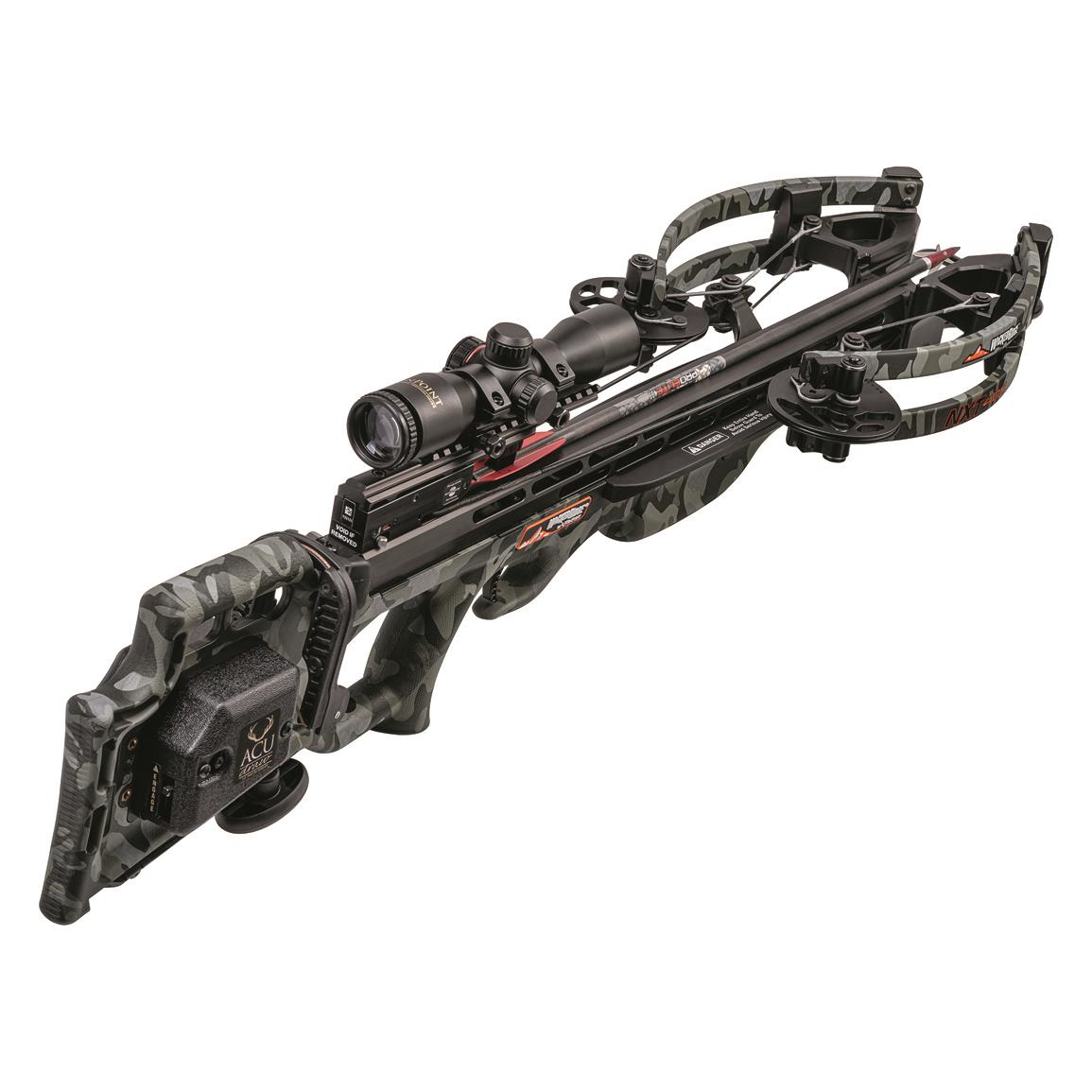Wicked Ridge NXT400 Crossbow Package – 720952, Crossbows
Shoots arrows up to 400 FPS. 142 ft-lbs. kinetic energy. 6″ axle-to-axle when cocked, 11.3″ uncocked. 200-lb. draw weight. Pro-View Scope with multi-coated glass and lighted aiming points.
The Wicked Ridge® NXT 400 Crossbow sets a new standard in crossbows with a lightweight, compact design that measures in at just 6″ axle-to-axle when cocked. Built right here in the United States and features high-quality components like a T5 trigger with smooth 3.5-lb. pull and Wicked Ridge’s Vector QuadTM cable technology that eliminates cam lean and gives you better downrange accuracy. Plus, it even comes equipped with a built-in ACUdrawTM cocking devices that makes loading your crossbow easier than ever. Includes accessory package with pre-sighted Pro-View scope, (3) Pro Elite 400 arrows, and quiver.
- Shoots arrows up to 400 FPS
- 142 ft-lbs. kinetic energy
- 6″ axle-to-axle when cocked, 11.3″ uncocked
- 200-lb. draw weight
- Pro-View Scope with multi-coated glass and lighted aiming points
- T5 trigger delivers a crisp 3.5-pound trigger pull
- ACUDRAWTM cocking devices draws your crossbow accurately with just 5-pounds of effort
- Vector QuadTM cable technology ensures straight arrow flight for match-grade accuracy
- Includes accessory package with pre-sighted Pro-View scope, (3) Pro Elite 400 arrows, and quiver
- Made in the USA
Order today!
Key Specifications
- Item Number: 720952
- Color: Peak camouflage
- Velocity: 400 FPS
- Kinetic Energy: 142 ft.-lbs.
- Power Stroke: 15.5″
- Draw Weight: 200 lbs.
- Axle to Axle (cocked/uncocked): 6″ / 11.3″
- Overall Length: 33″
- Weight: 7.4 lbs.
- Mfg. Number: WR21002-9522
Additional information
| Draw Weight | 200 lbs. |
|---|---|
| Weight | 7.4 lbs. |
| Mfg. Number | WR21002-9522 |



/catseye-(kara).jpg?w=480&h=600&fit=crop&crop=focalpoint&fp-y=0.8089887640449438&fp-x=0.472109375)

by Husker
Took it out of the box had lt together in 15 minutes. Shot the crossbow the next and had it sighted in quickly. Super excited for the season to start.
by Cheeko
i like it because of it being really light an easy to handle.
by Skid
This crossbow is awesome! I owed a wicked ridge invader for the last ten years killed a lot of deer. So glad l up graded always wanted a TenPoint this is fast and a real tac driver.
by Ally
Very easy assembly right out of the box to shooting a Target in less than 30 minutes! And dead on accuracy first shot!
by Mufiscian
[This review was collected as part of a promotion.] The NXT 400 is exceeding all of my expectations! I’m looking forward to hunting with it this Fall.
by Charlie
all was great except that the scope is not mounted and bore sighted so be prepared to install it…. also Ten Point has some great videos on their website to help on assembly of the quiver mount.
by Bobber
This is the best crossbow I have ever owned. Defiantly a good shooting Crossbow.
by Wally
This is an awesome crossbow light weight easy to fire accurate my son and I love it I would recommend this product to anybody and everybody who want to have a great time a and a great product.